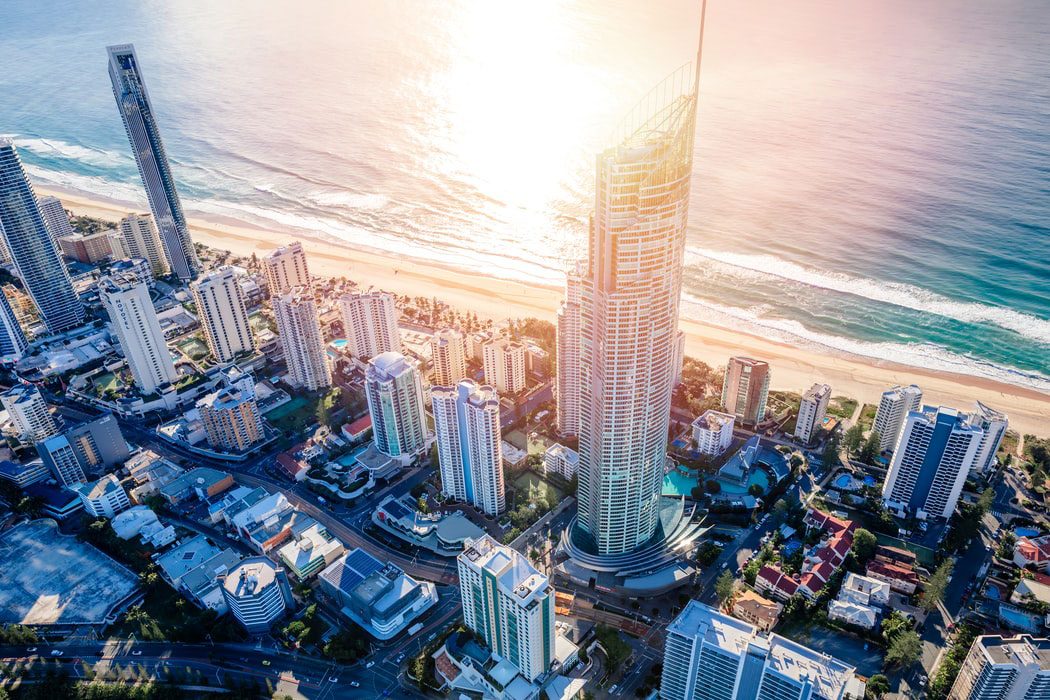This article is from the Australian Property Journal archive
THE December quarter brought another round of records for Queensland’s property prices, as the median price on the Gold Coast hitting the $1 million mark and Brisbane recorded strong growth to round out the year.
Data from the Real Estate Institute of Queensland (REIQ) shows house prices climbed 3.88% over the last three months of 2023 for a 6.04% gain over the year. The unit market median rose 3.4% over the quarter and 8.11% annually.
The Brisbane LGA led the charge for house price growth over the quarter at 6.91% to a median of $1,125,000, with this growth rate matched by neighbouring city Ipswich – but at a relative bargain median price of $620,000.
Gold Coast rose 5% to hit the million-dollar mark, previously only a position held by Brisbane and Noosa.
Taking a broader view, Queensland’s regional housing markets also continued to experience strong growth, with Toowoomba, Rockhampton, Bundaberg, and Townsville all standout performers over the year and nudging closer to brand-new price brackets. Rockhampton is poised to tip over $400,000.
“While these sale prices are cause for celebration for property owners when it comes time to sell, it can be frustrating and disheartening for buyers trying to enter or transition into the market,” REIQ CEO Antonia Mercorella said.
“This is particularly true for first home buyers who are competing with other prospective and established buyers for value buys and deals that aren’t as good as they once were.”
“The reality is that a balanced marketplace could support both – we want to see the dream of home ownership stay alive for first home buyers in our state, and we need property investors to put a roof over the head of our renters.
Mercorella said the quarter’s results proved the price growth experienced in Queensland was sustainable and likely to stay firm.
She said the market is still in a position where the “shortage of supply is driving the market and we’re lacking the housing diversity we need for everyone in our community – the critical gap of course is at the affordable end of the market”.
Most of the stock coming to the market in the Gold Coast is set to cater to luxury living, further perpetuating a high-end, high median market, according to the REIQ.
Real estate agents are reporting that open homes are overflowing, and second open homes are often unnecessary.
“There’s been low levels of construction over a long period of time, lagging social housing builds, and add to that accelerated migration to Queensland, and you’ve got a recipe for a housing crisis.”
The federal and state and territory governments’ National Housing Accord is aiming to deliver 1.2 million “well-located homes” over five years from July, spread across all states and territories although analysts have suggested the target is farfetched. The federal government has also introduced the $10 billion Housing Australia Future Fund – which critics say doesn’t go far enough – and the accompanying $2 billion Social Housing Accelerator.
ANZ said over the past week that the housing shortage will see Brisbane, along with Perth and Adelaide, outperform their capital city rivals for house price growth in 2024.
Build-to-rent projects “risk turning in ghettos”
The rental market is not much kinder. Brisbane vacancy rates came down even further to just 0.8% over January, Domain data shows. Veteran property investor Kevin Young, president of Queensland-based independent property investment group Property Club, which is based in Queensland, said analysis of CoreLogic median dwelling rental prices combined with rental housing statistics showed tenants in Brisbane are paying $200 million in rent every week – or $10.8 billion annually.
The census showed that there were over 320,000 private rental properties in Brisbane while the most recent CoreLogic data reveals that the median rental weekly dwelling cost was $627. For every $10 rise in weekly rents, Brisbane tenants would have to collectively pay an additional $166 million in rent per year.
Young – who ran for last year’s Fadden federal by-election as an independent – said that the rental crisis in Queensland and throughout Australia would only be solved unless governments “stopped attacking mum and dad investors and instead gave them more incentives to enter the real estate market”.
“Mum and dad property investors currently supply over 90% of rental properties in Australia and they hold the key to solving our entrenched rental crisis.
“Between government red tape and ever-increasing regulations combined with the constant threats of removing incentives such as negative gearing, mum and dad investors now feel like they are a threatened species.”
He criticised governments throughout Australia, including in Queensland, that are now “bending over backwards with financial incentives to encourage big multinational overseas companies to construct massive build-to-rent projects as a quick fix to the housing crisis.
“These large corporations need economies of scale to make their build-to-rent model to work so they can deliver the highest capital returns to their shareholders.
“These products are totally unsuitable as a long-term solution to Australia’s need and they risk turning into ghettos as they are managed overseas.”
South east Queensland accounts for 39% share of the nation’s completed build-to-rent stock, largely owing to the former Gold Coast Commonwealth Games Village.
He said it is “madness” to give tax incentives to overseas companies which “suck money out of Australia rather than incentivising local mum and dad investors to build more suitable homes, thereby ensuring that these people can create some wealth to fund their retirement”.




